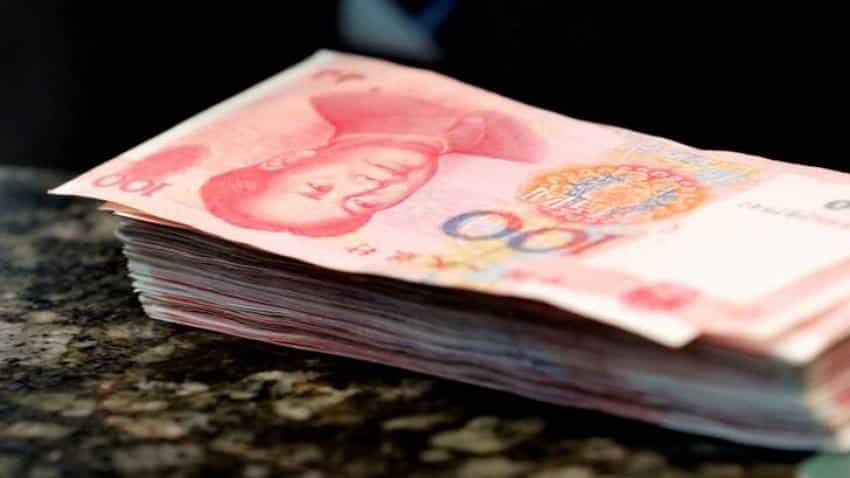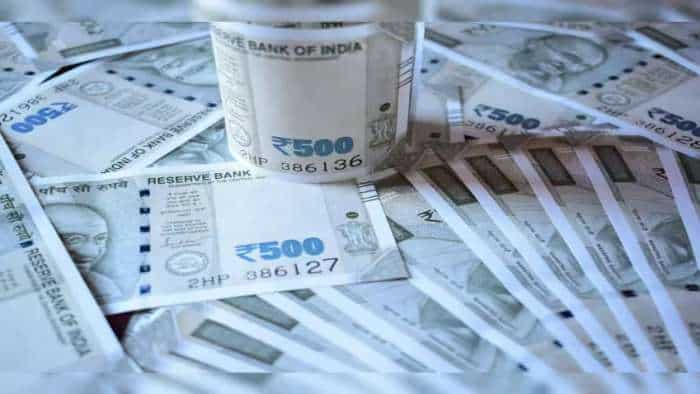China banks extend record 12.65 trillion yuan in loans in 2016 as debt worries mount
China's banks have extended a record 12.65 trillion yuan ($1.84 trillion) of loans in 2016 as the government encouraged more credit-fueled stimulus to meet its economic growth target.

China`s banks extended a record 12.65 trillion yuan ($1.84 trillion) of loans in 2016 as the government encouraged more credit-fueled stimulus to meet its economic growth target, despite worries about the risks of an explosive jump in debt.
China`s top leaders pledged last month to stem the growth of asset bubbles in 2017 and place greater importance on preventing financial risk, even as some global financial experts warned the nation`s debt load is nearing crisis levels.
In December alone, Chinese banks extended 1.04 trillion yuan in net new yuan loans, far more than economists had expected, central bank data showed on Thursday.
Analysts polled by Reuters had expected new lending would fall to 700 billion yuan from November’s 794.6 billion yuan.
New bank loans last year surpassed the levels of China`s massive credit-led stimulus during the global financial crisis in 2009, according to Reuters calculations based on central bank data. The 2016 total was some 8% above the previous all-time high of 11.72 trillion yuan set just the year before.
ALSO READ: China Q4 GDP grows 6.8%, but debt risks loom
Despite China`s ever-more frantic pace of credit creation, however, some analysts say Beijing is getting less and less bang for its buck, with every yuan of stimulus proving less efficient in generating the same amount of economic growth, while adding to the risk of rising defaults and non-performing loans.
"Let`s say credit growth in China right now is about 13% but GDP growth is around 6.7-7%," said Commerzbank senior emerging market economist Zhou Hao in Singapore.
"From a longer term perspective, you`re using the same level of credit growth but you have lower real economic growth, so the credit is becoming less productive and less efficient."
A pick-up in borrowing by Chinese companies boosted to 67% the proportion of long-term corporate loans among all loans in December, ANZ economist David Qu wrote in a note, a significant reversal from recent months, when home mortgages predominated.
ALSO READ: China steps up capital controls, tightens investment rules for state firms
Dozens of Chinese cities have added new curbs on home buyers since October, to battle speculation amid skyrocketing prices.
But expectations for tightening of credit expansion this year could have driven some of the December borrowing, Qu added.
Despite the December slowdown, household loans made up half of total new yuan loans in 2016.
Capital Economics said the December pick-up was unusual, since annual loan quotas are mostly used up by year-end.
"A shift worth noting was a decline in corporate bond issuance in favour of bank loans, which explains the concurrent jump in bank lending.... This likely reflects the sharp increase in bond yields that took place last month," Capital Economics` China economist Julian Evans-Pritchard said in a note.
"We expect the gradual slowdown in broad credit growth since last summer to continue in the coming months, given few signs that fresh monetary easing is on the cards. This will start to weigh on economic activity before long."
ALSO READ: China's economy will grow around 6.5% in 2017; yuan to continue falling: CASS Researchers
Ample Funds, Growing Risks
Global investors are buzzing over whether China`s leaders will be willing to accept more modest economic growth this year as they step up efforts to contain risks from the spike in debt.
Data next week is expected to almost certainly show the economy hit the government`s full-year 2016 target of 6.5-7%, fueled by ample credit and higher government infrastructure spending which is often being channeled through more inefficient state firms.
Other money supply data on Thursday confirmed China continued to keep the financial system flush with cash.
Broad M2 money supply (M2) grew 11.3% in December from a year earlier, missing forecasts, while outstanding yuan loans rose 13.5% by month-end.
Outstanding loans had been expected to rise 13.1% while money supply was seen up 11.5%.
China’s total social financing (TSF), a broad measures of credit and liquidity of the economy, slid to 1.63 trillion yuan in December from 1.74 trillion yuan in November.
But for the full year, TSF also hit a record of 17.8 trillion yuan.
TSF includes off-balance sheet forms of financing that exist outside the conventional bank lending system, such as initial public offerings (IPOs), loans from trust companies and bond sales.
China`s overall debt has jumped to more than 250% of GDP from 150% at the end of 2006, the kind of surge that in other countries has resulted in a financial bust or sharp economic slowdown, analysts say.
The chief of China`s state planning agency vowed on Tuesday to contain high company leverage ratios, saying it will not allow debt of non-financial firms to rise beyond current levels and will step up efforts to encourage companies to restructure their debts. China`s corporate debt has soared to 169% of gross domestic product (GDP).
ALSO READ: China 2016 home prices surge most in 5 years, but moderating, easing bubble fears
Get Latest Business News, Stock Market Updates and Videos; Check your tax outgo through Income Tax Calculator and save money through our Personal Finance coverage. Check Business Breaking News Live on Zee Business Twitter and Facebook. Subscribe on YouTube.
RECOMMENDED STORIES

Top 7 SBI Mutual Funds With Highest SIP Returns in 15 Years: No. 1 scheme has turned Rs 12,222 monthly SIP investment into Rs 1,54,31,754; know about others too

Highest Senior Citizen FD rates: See what major banks like SBI, PNB, Canara Bank, HDFC Bank, BoB and ICICI Bank are providing on special fixed deposits

Power of Compounding: In how many years, investors can achieve Rs 6.5 cr corpus with monthly salaries of Rs 20,000, Rs 25,000, and Rs 30,000?

SBI 400-day FD vs Bank of India 400-day FD: Where will investors get higher returns on investments of Rs 4,54,545 and Rs 6,56,565?
01:16 PM IST










 China Q4 GDP grows 6.8%, but debt risks loom
China Q4 GDP grows 6.8%, but debt risks loom China steps up capital controls, tightens investment rules for state firms
China steps up capital controls, tightens investment rules for state firms China to target around 6.5% economic growth in 2017: Sources
China to target around 6.5% economic growth in 2017: Sources China's economy will grow around 6.5% in 2017; yuan to continue falling: CASS Researchers
China's economy will grow around 6.5% in 2017; yuan to continue falling: CASS Researchers  China 2016 home prices surge most in 5 years, but moderating, easing bubble fears
China 2016 home prices surge most in 5 years, but moderating, easing bubble fears